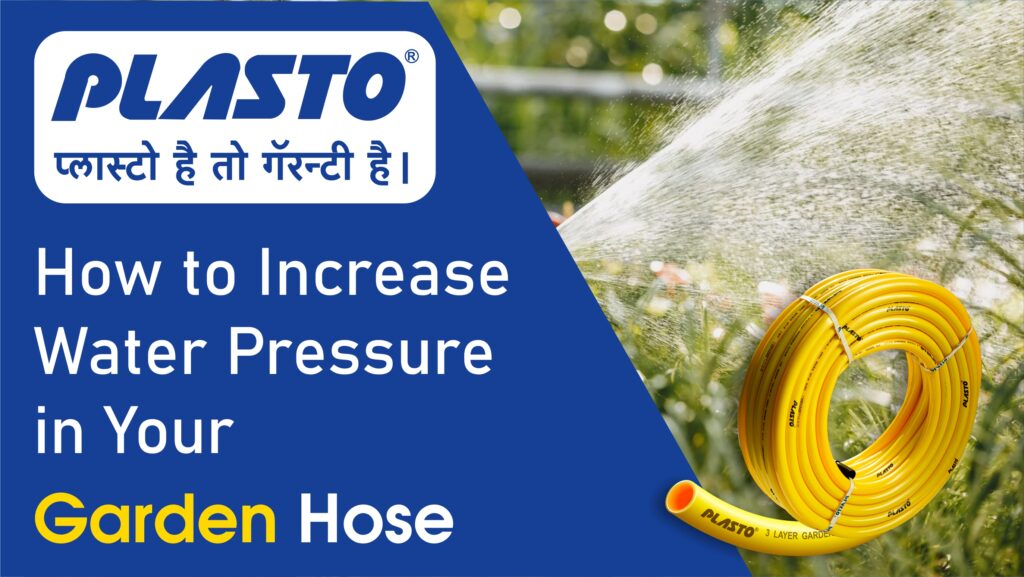
Having adequate water pressure in your garden hose is essential for efficient watering, cleaning, and various outdoor tasks. Low water pressure can be frustrating and inefficient. Fortunately, there are several factors that can affect your garden Are you tired of dealing with low water pressure in your garden hose? It can be frustrating and make outdoor tasks inefficient. But don’t worry, there are solutions to this problem. In this blog, we’ve outlined some common issues that can cause low water pressure and provided simple solutions to help you enjoy better water flow.
One reason for low water pressure in your garden hose could be high demand elsewhere in your home. Try using your hose during periods of lower household water usage, such as early morning or late evening. Another possible cause is a faulty garden tap. Check for any visible leaks or damage and consider repairing or replacing the tap.
Leaks in the hose can also reduce water pressure. Inspect your garden hose for any leaks, kinks, or obstructions. Repair or replace damaged sections of the hose, and make sure the hose is not twisted or kinked. Additionally, the main water valve that supplies water to your home can affect garden hose water pressure. Ensure that the valve is fully open and clear of any obstructions.
If you have a water pressure regulator installed in your plumbing system, it could be set too low. Consult a professional plumber to adjust the regulator to a suitable level, balancing protection and water pressure.
By addressing these issues, you can maintain adequate water pressure in your garden hose and make your outdoor tasks more manageable. Don’t forget to regularly inspect and maintain your garden hose and plumbing to ensure consistent water pressure and a hassle-free gardening experience.se’s water pressure, and many of them can be addressed easily. In this blog, we’ll explore common issues that can lead to low water pressure in your garden hose and provide solutions to help you enjoy better water flow.
Increasing Your Garden Water Pressure
- Demand for Water:
One of the most straightforward reasons for low water pressure is high demand elsewhere in your home. If other appliances or fixtures are using a significant amount of water at the same time you’re trying to use your garden hose, it can result in reduced pressure. To improve your garden hose’s water pressure, try using it during periods of lower household water usage, such as early morning or late evening.
- Faulty Garden Tap:
A faulty or old garden tap can restrict water flow to your hose. Check the tap for any visible leaks or damage. If you notice any issues, it might be time to replace or repair the tap. A new, well-functioning garden tap can significantly improve water pressure.
- Leaks in the Hose:
Inspect your garden hose for any leaks, kinks, or obstructions. Even small leaks can reduce water pressure. Repair or replace damaged sections of the hose, and make sure the hose is not twisted or kinked, as this can impede water flow.
- Main Water Valve:
The main water valve that supplies water to your home can also affect garden hose water pressure. Ensure that the valve is fully open. Sometimes, over time, these valves can become partially closed due to mineral buildup or sediment. Turn it off and back on to clear any obstructions.
- Water Pressure Regulator:
If you have a water pressure regulator installed in your plumbing system, it could be set too low. Regulators are designed to protect your plumbing from high water pressure, but if set too conservatively, they can limit the flow to your garden hose. Consult a professional plumber to adjust the regulator to a suitable level, balancing protection and water pressure.
Conclusion
Maintaining adequate water pressure in your garden hose is essential for efficient outdoor tasks. By addressing issues such as high demand for water, faulty garden taps, hose leaks, main water valve obstructions, and water pressure regulators, you can enjoy better water flow and make your gardening and outdoor activities more manageable. Regularly inspect and maintain your garden hose and plumbing to ensure consistent water pressure and a hassle-free gardening experience.

